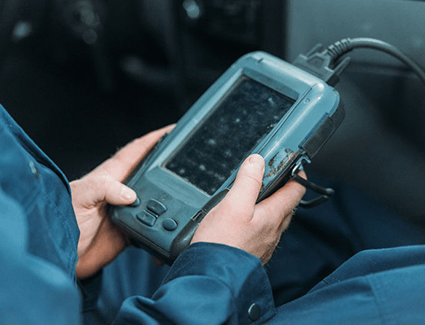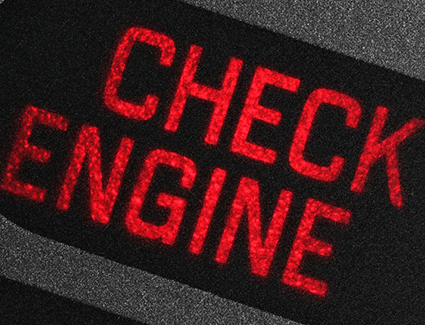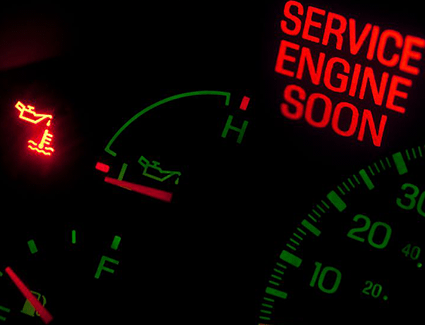

What should you do when the check engine light comes on in your car's dashboard? Well, we'd tell you to "check the engine," but that's about as unhelpful as it is obvious. Chances are, you'll need a little help from the experts to have this problem taken care of properly. On this page, we'll give you three important things you should know about your car's check engine light. Even if you don't know your pistons from your gaskets, these tips will help you take the best care of your car. If the check engine light indicates a problem under the hood, these three tips will help you know what to expect, and what you should do next.

Tip #3: Don't Ignore a Flashing Check Engine Light
A solid check engine light points out any number of potential engine issues -- but a blinking check engine light means something different entirely. It means your engine is misfiring in a significant way that could lead to severe damage. Oftentimes, it's because a misfire in the engine is dumping unspent gasoline into the exhaust and into the catalytic converter. This crucial anti-pollution component of your car can be damaged, and it'll need to be fixed -- a potentially costly repair. As soon as you see a blinking check engine light, turn off the car and request a tow to our service department. This can help prevent severe damage to the catalytic converter.

Tip #2: Crack the Trouble Code
When you arrive at our service center for a solid check engine light, our first step after greeting you and consulting with you about your vehicle will be to hook up our sophisticated code readers to your car. When the check engine light turns on in your car, the engine computer stores a trouble code that our code readers can retrieve. Each code corresponds to a particular problem with a particular component on your car -- giving our techs a place to begin diagnosing the actual problem.
If you want to have a better idea of what to expect, you can hook up a code reader of your own and see what problems have been detected in the engine. You'll find the OBD-II port located behind the dashboard under the steering column in most modern cars.

Tip #1: Check the Gas Cap
If you see a solid check engine light in your dashboard, don't delay in bringing your car in for a closer look. The longer you drive without getting a fix, the more likely you are to exacerbate the problem. Luckily, some of the problems most commonly indicated by the check engine light are cheap and easy fixes. In fact, one of the most common reasons for a check engine light that we see in our service center is a loose or broken gas cap. Give your gas cap an extra twist to make sure it's sealed and see if your check engine light turns itself off after driving around a bit. If not, you might need a new gas cap that'll seal properly, or another quick repair. Other common issues indicated by a check engine light are faulty O2 sensors, a bad mass airflow sensor and bad spark plugs.
Contact
15005 SW Tualatin Valley Highway
Beaverton, OR 97006
- Contact: (503) 567-1218


